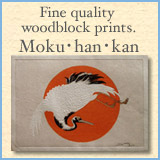Hello Cruel World
Wednesday, January 07, 2004
www.kurzweilcyberart.com/
Raymond Kurzweil ( http://www.kurzweiltech.com/aboutray.html ), a name synonymous with the potential of machine intelligence, brings you the latest in CyberArt advancements with AARON, the Cybernetic Artist.
AARON is not your ordinary screensaver. Developed by Harold Cohen ( http://www.kurzweilcyberart.com/aaron/hi_cohenbio.html ) over a period of nearly thirty years, and productized [!!!] by Kurzweil CyberArt Technologies, Inc., AARON is the first fine art screensaver to utilize artificial intelligence to continuously create original paintings on your PC.
With his continued commitment to human assistive technology, Raymond Kurzweil is proud to introduce this breakthrough screensaver. AARON is offered as shareware! Download a free trial copy of AARON ( www.kurzweilcyberart.com/KCATaaron/DOWNLOADbasic ) and try it for yourself. If you decide to keep the AARON software, we ask you to register it. However, the product will not time out, and the payment requirement is based on trust.
AARON is offered as Shareware. You can download the product at no charge. After using the fully functional product for 3 days, if you wish to continue to use AARON, we ask you to purchase a registration key for $19.95. However, the product will not time out, and the payment requirement is based on trust. Included in the product is a Register function that enables you to make the payment.
To start enjoying AARON right now, just complete the form below (required items are marked with an asterisk) and click "Download."
www.kurzweilcyberart.com/poetry/rkcp_overview.php3
Ray Kurzweil's Cybernetic Poet
A screen saver that writes poetry, a Poet's Assistant that helps you write poetry (and song lyrics!), and 50 professionally - designed "poet personalities."
Upgrade to get the Poet Analyzer, the Poet Creator, and 50 additional poet personalities.
Find out how the RKCP can help you find rhymes, alliterations, ideas for the next word of your poem (or song), ideas for turns of phrase, and more.
The first version of Ray Kurzweil's Cybernetic Poet was written by Ray Kurzweil in the mid-1980s
NOTE: The free version of the software requires a PC running Windows95 or Windows98. WindowsNT and Macintosh are not supported at this time. The software has not been tested on Windows2000.
A Sampler of Poems by Ray Kurzweil’s Cybernetic Poet
www.kurzweilcyberart.com/poetry/rkcp_poetry_samples.php3
(The download page for the 'poet': www.kurzweilcyberart.com/poetry/rkcp_freedownload_request.php3 )
Portrait of an Artist as a Programmer
Review by Al Stevens
Copyright (C) Dr. Dobb's Journal, January, 1993
www.ddj.com/articles/1993/9301/
(needs registration to get to free parts or subscription to get to other parts)
Extracts from a review by a programmer of a book about this program, its author & its products: - at www.eha.boj.org/repositorio/sz/msg00023.html
"Aaron is not a typical image generator of what has come to be known as "computer art." Aaron does not generate geometric forms, certainly interesting, but infinitely repeatable. Aaron does not produce fractals, beautiful and random, but not representative of the items that comprise the world. Aaron is not a tool for painters, designers, draftsmen, or animators to be used as a medium to express the creative ideas of the human user. Instead, Aaron is a computer program with a software interface to a hardware drawing device that creates original pictures, each picture different from the others" ...
"The programming reader will find much with which to relate in Aaron's Code. We will ask questions, too, about issues that McCorduck does not address--or, at least, not adequately for us. Cohen wrote the first version of Aaron in Fortran on the CDC 3200. It is amusing to read of his discovery that batch debugging by passing card decks through the window to an unseen computer was less than productive. He solved the problem by getting hands-on access to a Data General Nova. Subsequent machines included the PDP-11 and VAX, with the current implementation a Micro-VAX. Sometime during those ports he switched from Fortran to the C language, which McCorduck calls a "trifle obsolescent." Today, all new development is proceeding in LISP on a donated LISP machine, reflecting the program's roots in artificial intelligence. All these ports suggest a revealing but unrevealed study in portability" ...
"It is not clear how extensively Cohen studied programming as a discipline beyond what he needed to learn to develop Aaron. He seems to have independently discovered certain established tenets of artificial intelligence, learning later that disciplines already exist that have covered those bases comprehensively" ...
"The first device was a mechanical turtle that wheeled around the floor on a mural-sized sheet of paper, raising and lowering a pen. The book suggests that Cohen built the turtle himself. He abandoned it for what appears to be a flat-bed plotter because the turtle, being cute, drew attention during exhibitions from the artwork it was drawing. Some pictures are said to be produced on a laser printer. The book says that the plotter, which it does not identify as such, is a "homebrew" device, suggesting that Cohen built it specifically for Aaron," ...
"[the] program that has the potential to be in many places simultaneously generating unique works of art. Does its ability to mass produce lessen the value of its creations? What is the test of quality? Aaron cannot critique or reject its own output. The program has no archival storage of past works. Its performance does not change due to experience, criticism, or acceptance. It does not repeat qualities that sell well and reject those that do not ... What are the consequences of works of art that the artist -- Aaron -- creates after the meta-artist -- Cohen -- dies? Who owns the creative rights to the work? If a pirated copy of Aaron creates a picture, is the picture a part of the pirate's contraband?"
"Aaron's Code: Meta-Art, Artificial Intelligence, and the Work of Harold Cohen Pamela McCorduck W. H. Freeman and Company, 1991 225 pages, $25.95 ISBN 0-7167-2173-2 "
Labels: poetry
Comments:
Post a Comment
This is my blogchalk:
Australia, New South Wales, Sydney, English, photography, reading, natural history, land use, town planning, sustainability.




